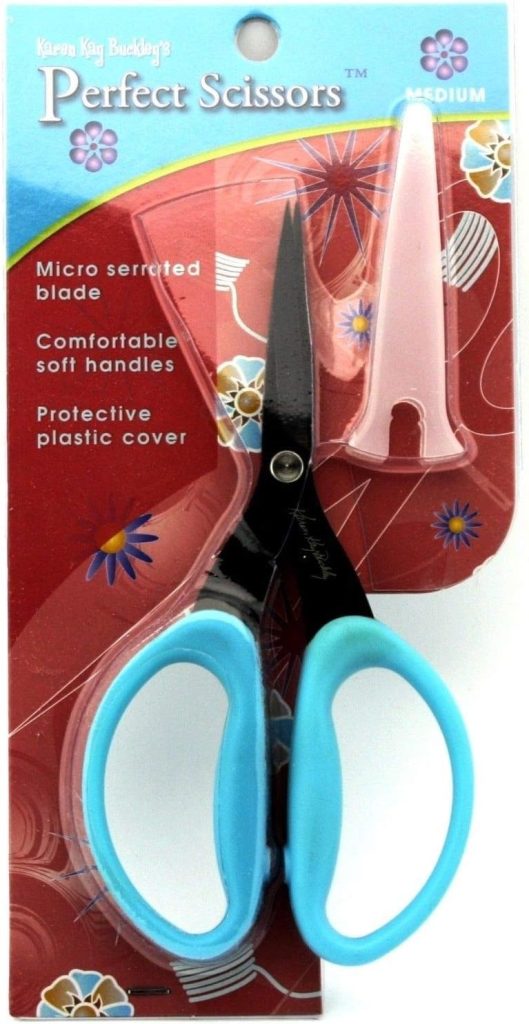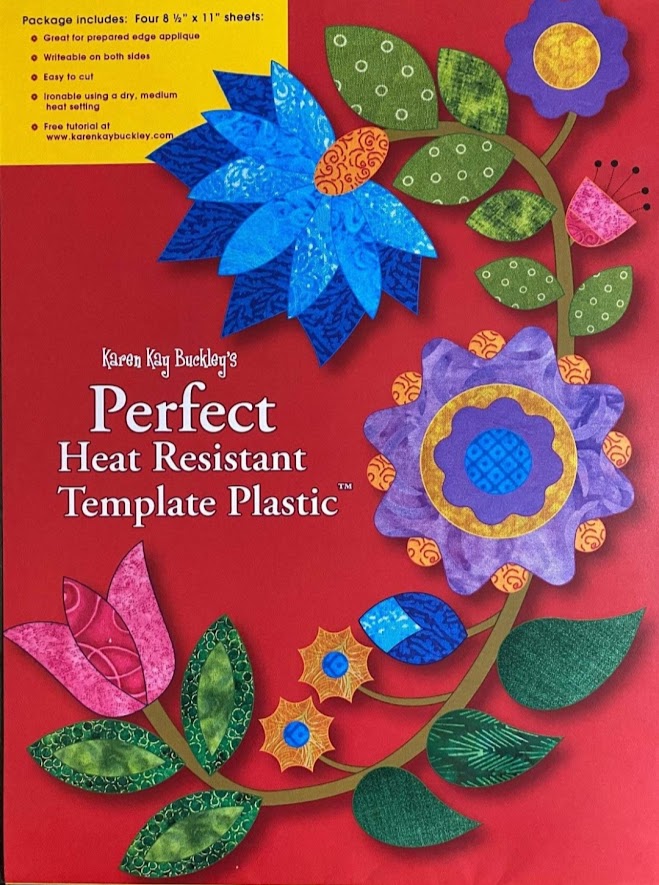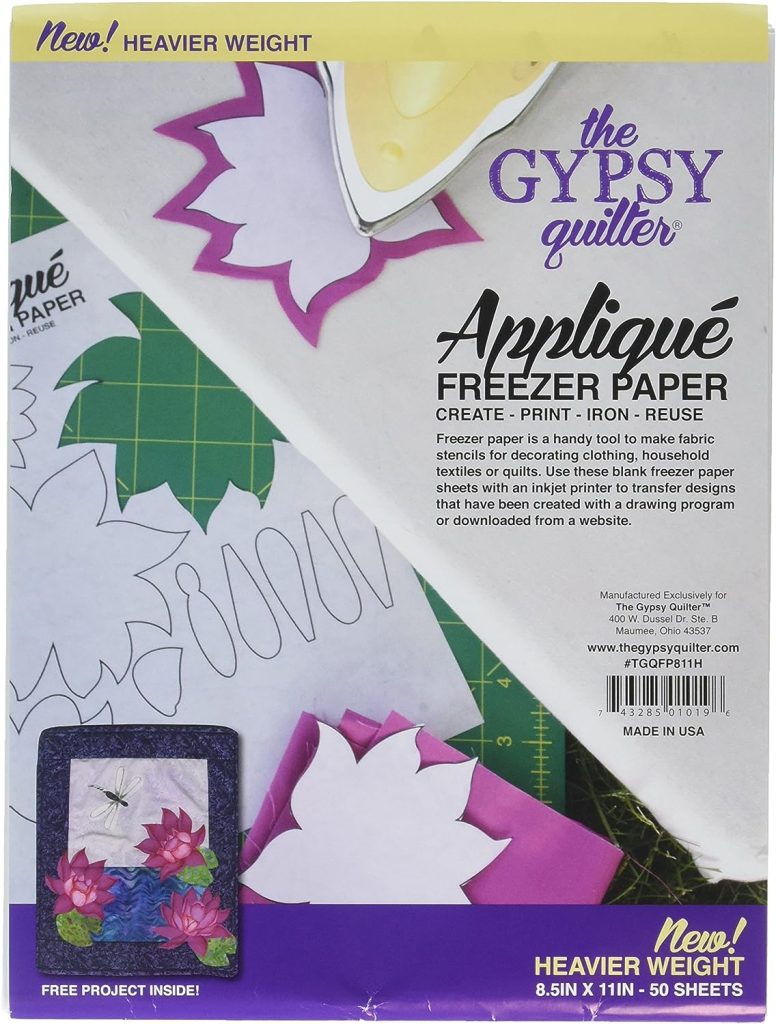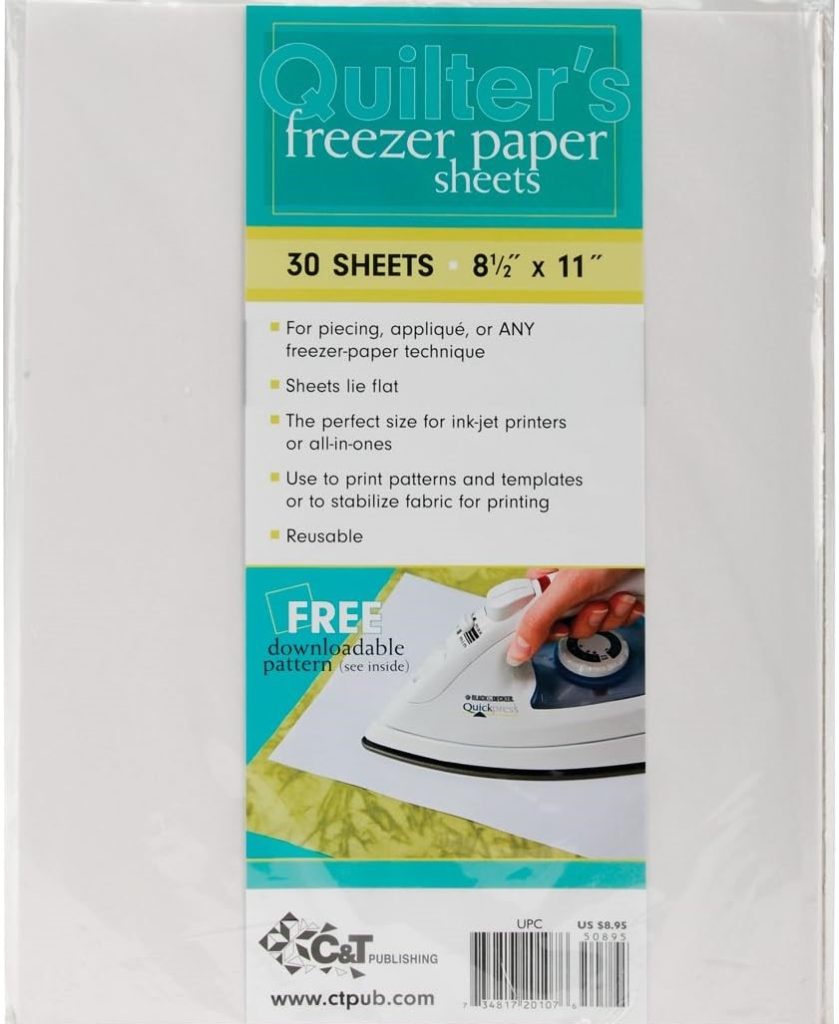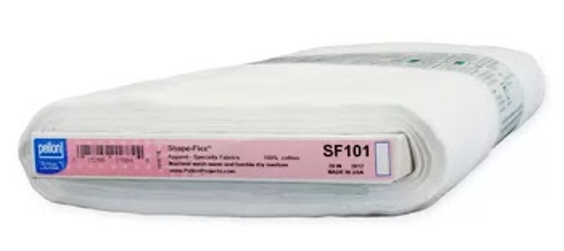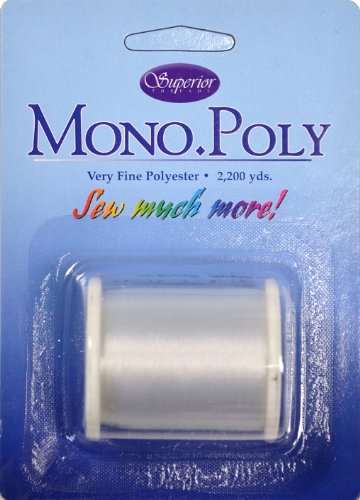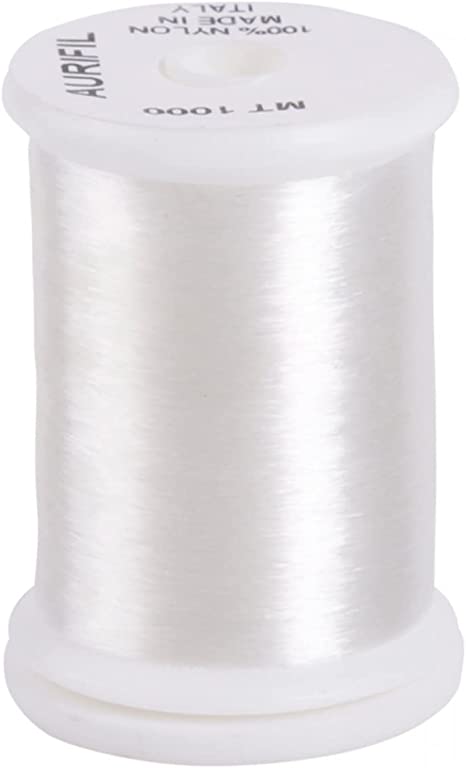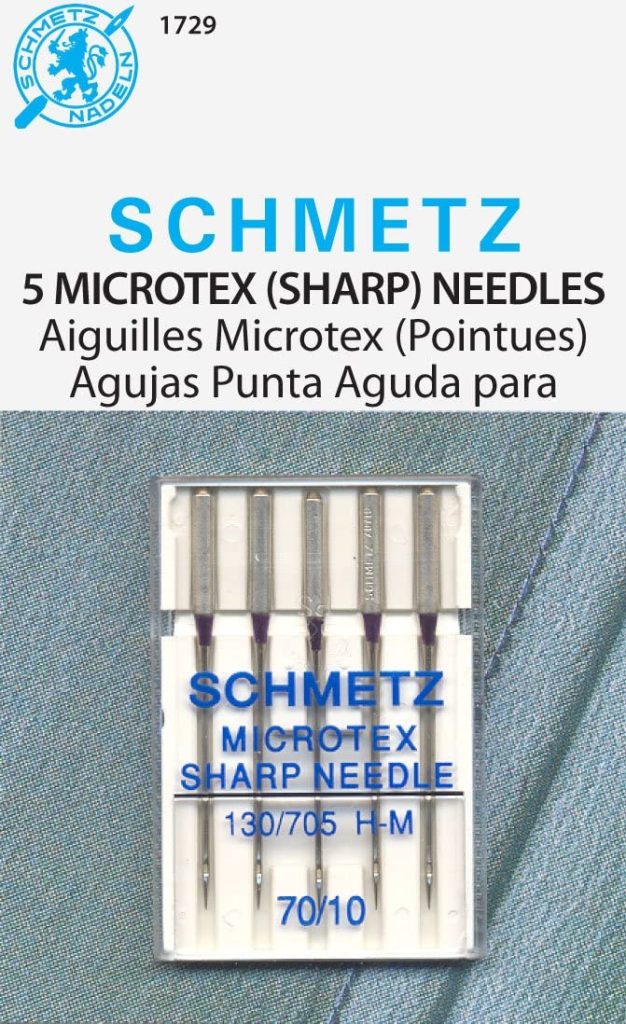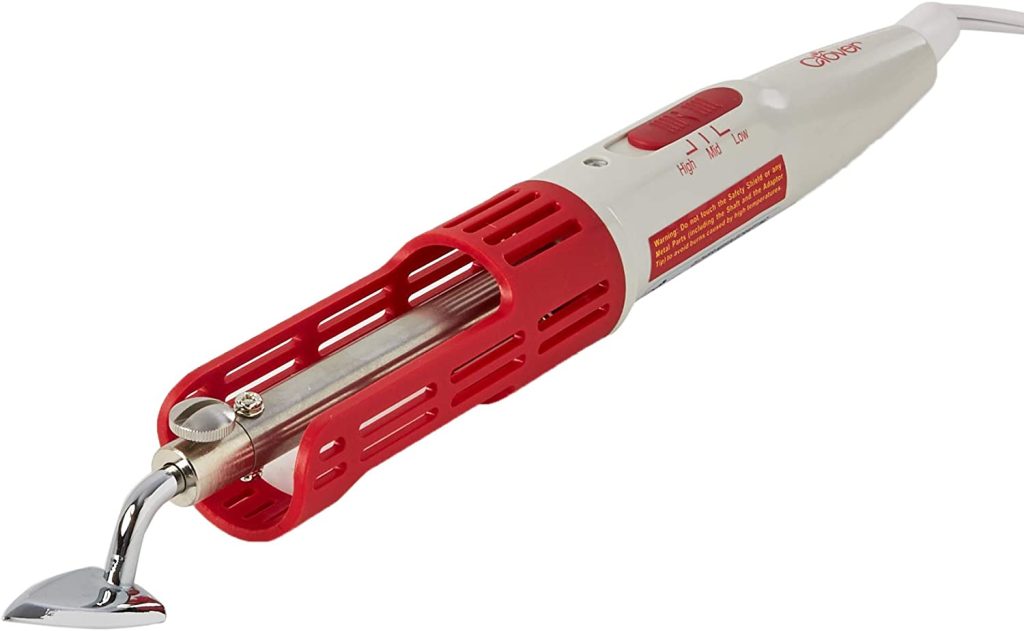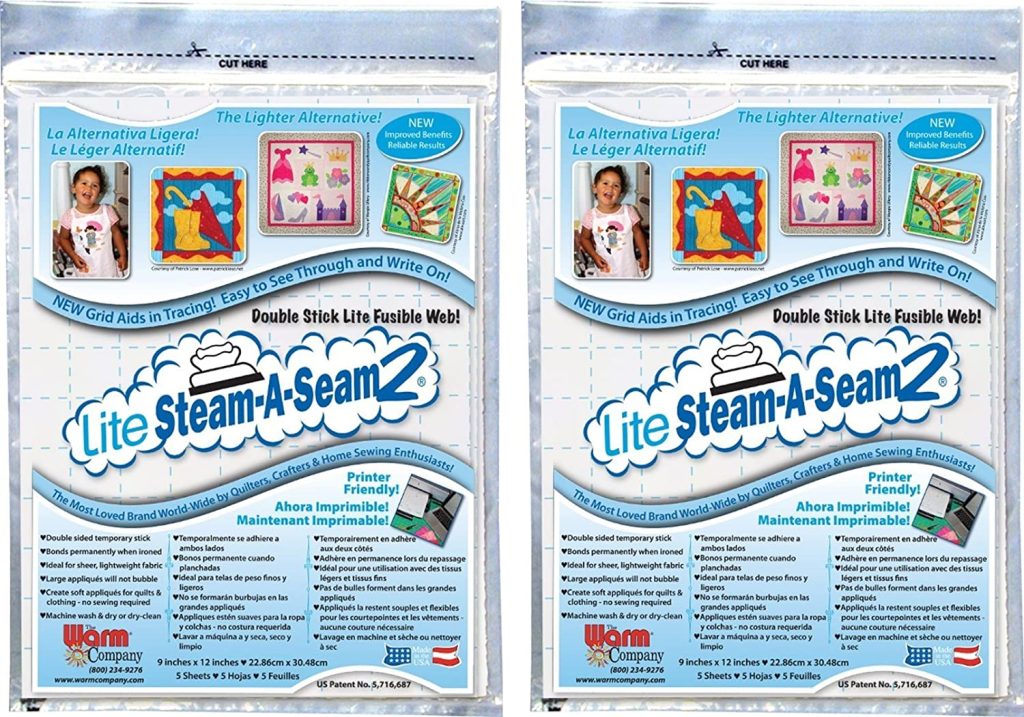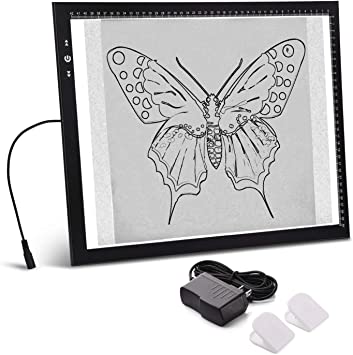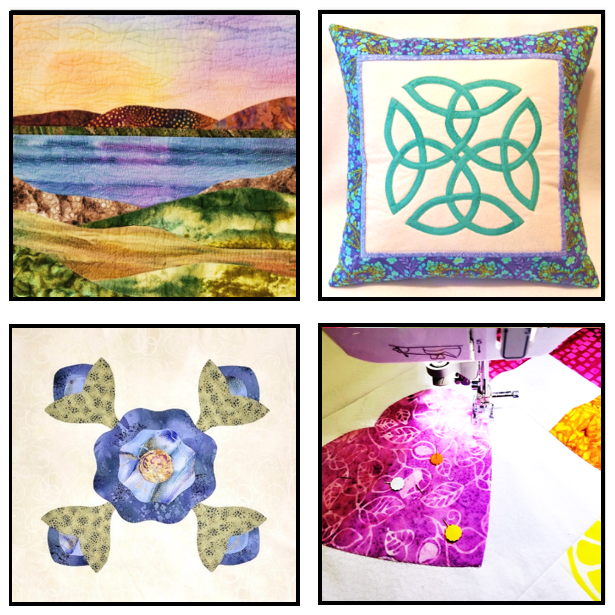
(Updated April 2024) With new sessions of the Modern Rose, The Magic of Invisible Machine Appliqué, Create Your Own Quilted Landscape, and the Celtic Blessings True Lovers Knot Invisible Machine Appliqué classes coming up in my online shop, I thought it might be a good time to share a few of my most-used (and most asked-about) tools and notions. These are all tools that I’ve used for years and have stood the test of time. I hope you’ll find this short list helpful!
These are all affiliate links to the exact products I purchased for my own use. Using an affiliate link does not affect the price you pay, but it does help support my website. I strongly support buying from your local quilt shop whenever possible, but sometimes you just can’t beat ordering online.
I understand that many of you live outside of the United States, and that ordering and shipping through a US site might be cost-prohibitive. If that’s the case for you, I hope these links can at least make it easier for you to find these (or similar) products where you live.
Karen Kay Buckley’s Perfect Scissors, Medium 6-Inch Micro Serrated Blades (Original Version)
I only recently got around to trying these scissors, and I’ve got to say – I LOVE them!
Here’s the info from the blurb:
- Micro serrated blades keeps fabric from slipping so cutting is more accurate.
- Helps to prevent frayed edges.
- Comfortable soft handles and protective plastic cover.
- Cuts up to 8 layers of cotton fabric easily.
- 6″ total length.
I’m only cutting one layer of fabric at a time, but I’m finding that these scissors are definitely helping to make the process faster, easier, and more accurate. But be careful – they’re SHARP.
They also come in two other sizes:
Perfect Scissors Karen Kay Buckley 7 1/2 inch Large Purple
Karen Kay Buckley’s Perfect Scissors, Small 4-Inch Mirco Serrated Blades
Perfect Heat Resistant Template Plastic by Karen Kay Buckley
I’ve only recently started using this template plastic; but so far, I’m loving it. It is a handy alternative to freezer paper for some techniques. I’m using it in conjunction with heavily starched fabric – see the next entry below.
Here’s the info on the packaging:
- This package includes four 8 1/2″ x 11″ sheets
- It is ironable with a dry, medium heat setting on your iron
- Using this heat resistant template plastic for prepared edge applique gives you clean, crisp edges
- It is writeable on both side and feeds through the copy machine beautifully
My note: This product is heat-resistant, not heat-proof. Depending on the heat of the iron you are using to press the seam allowances of your fabric over the plastic templates, the templates may warp or degrade with repeated use. I used my leaf template to accurately press about 25 leaf shapes before replacing it with a fresh template.
Niagara Spray Starch Plus, Heavy Finish
I’m using this in conjunction with the heat resistant template plastic listed above, but I’ve also successfully used it with templates cut out of thin cardstock or old manila folders. I’m including the Amazon.com link so you can read more about it; however, it is usually much cheaper if you can find it at your local grocery store.
Note: Although I typically prefer to use Best Press when pressing my quilting-weight cotton fabrics, Niagara Spray Starch Plus definitely works better for appliqué.
Reynolds Kitchens Plastic Coated Freezer Paper – 75 Square Feet
I don’t use freezer paper for all of my methods, but it is a favorite! It’s more economical to buy it on rolls like this; but, you can also find it in precut sheets that you can run through your printer – very convenient!
Please note: freezer paper is not needed for my Celtic-style appliqué.
Pellon Shape Flex Woven Cotton White Fusible Interfacing SF101
I don’t use interfacing for all of my methods; but when I do use it, this is my favorite. I find woven interfacing a bit easier to trace onto without stretching or distorting the interfacing. That said, you can substitute your own favorite lightweight fusible interfacing if you don’t have this one on hand.
Please note: interfacing is not needed for Celtic-style appliqué.
Superior Threads MonoPoly Invisible Thread
Aurifil Clear Invisible Thread
As I’ve taught around the country, I have found MonoPoly from Superior Threads and the Invisible thread from Aurifil seem to work the best in the greatest number of machines. I use the clear version of both brands – only use the smoke if I’m working with black or very dark fabrics. Either way, I use it only as a top thread, preferring very fine cotton or poly in the bobbin. (We dive deeper into those options in class.)
Schmetz Microtex Sharps, Size 70/10
These are my go-to sewing machine needles for all styles of machine appliqué. The very sharp point pierces the fabric(s) cleanly and the slim shaft makes a very small hole that is a great match for the fine threads I use. This really helps make it less likely for the bobbin thread to be pulled to the top of the fabric.
The Clover Mini-Iron II (The Adaptor)
It’s called the Adaptor because it is also available bundled together with interchangeable tips, but I find that I really only need the original tip (as shown here). I love this mini-iron because it gives me vastly superior visibility as I’m working AND is so much lighter and more maneuverable than a regular iron.
Roxanne Glue Baste It EZ Squeeze
I’ve used this water soluble basting glue for years and years, and it’s still my favorite. The fine applicator tip makes it easy to dispense the tiny dots of glue that I’m looking for. Once heat-set, the glue holds extremely well, but can easily be washed out. My only complaint was that squeezing the original bottles made my hands ache. I find the EZ squeeze bottles MUCH easier to use.
Note: I most often use water soluble basting glue with freezer paper-on-top and Celtic-style appliqué.
Pressing Bars
These were a little harder to find – I didn’t find the yellow plastic Quilter’s Press Bars from Collins or Dritz that I’ve used in the past, but I did find these green Clover Loop Pressing Bars that work the exact same way. I consider these a MUST for most Celtic-style appliqué.
Warm Company Steam-A-Seam Lite 2 Double Stick Fusible Web
This is my go-to for raw-edge fusible appliqué, so you might wonder why it’s on this list. I’m including it here because I often use it in my Celtic-style appliqué projects. I find it helpful to fuse any inset fabrics in place before adding the bias tubes that will cover all the raw edges of the (optional) insets.
Please note: I only used 1 sheet when I made my Celtic Blessings sample. I am including the double-pack here because it seems to be the most economical optional at the time of my search.
Light Box or Tracing Pad – A3 (16.7″ x 11.9″ visual area)
Light Box or Tracing Pad – A2 (23.8″ x 16.9″ visual area)
I’ve used a number of different models and sizes over the years. These two were the most recent additions to my collection, and I’ve been very happy with them. There are very slim, easy to store or to transport to class, and have adjustable light levels.
If you are in the Celtic Blessings class, please be sure to read your supply list carefully ahead of time so you’ll have everything you need for class. I’m looking forward to seeing you soon!
And even if you don’t plan on joining us for class, I hope you find these links helpful. 🙂
